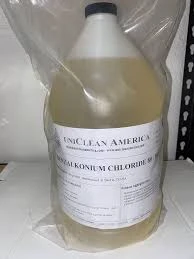Polyacrylamide Polymer
Understanding Polyacrylamide Polymer Characteristics and Applications
Polyacrylamide (PAM) is a synthetic polymer that has gained widespread prominence in various industrial applications due to its excellent properties. Composed of acrylamide monomers, polyacrylamide is known for its ability to absorb water and swell, making it a highly effective substance in numerous fields, including water treatment, agriculture, and cosmetics.
Understanding Polyacrylamide Polymer Characteristics and Applications
In the realm of water treatment, polyacrylamide plays a critical role as a flocculant. It aids in the coagulation process, allowing suspended particles to clump together and settle out of water more effectively. This property is especially valuable in municipal water treatment facilities, wastewater processing, and various industrial sectors, where clean water is imperative. By utilizing PAM, companies can achieve improved water clarity and reduced chemical usage, leading to more sustainable practices.
polyacrylamide polymer

Moreover, polyacrylamide is increasingly used in the oil and gas industry, particularly in enhanced oil recovery (EOR) processes. The polymer can improve the viscosity of water injected into oil reservoirs, thereby facilitating the extraction of oil that may otherwise remain trapped. This application not only enhances productivity but also contributes to more efficient resource management.
In addition to these industrial uses, polyacrylamide is also utilized in the cosmetics industry. Its thickening and stabilizing properties are valuable in formulating lotions and creams, providing a smooth texture while enhancing the product's ability to retain moisture. As consumers become more aware of product ingredients, the demand for safe and effective formulations has led to increased interest in natural and synthetic polymers like PAM.
Despite its various beneficial applications, it is crucial to handle polyacrylamide with care due to its potentially harmful effects on human health and the environment, particularly in its unpolymerized form, which is classified as a neurotoxin. Therefore, safety protocols must be strictly followed during usage and disposal.
In conclusion, polyacrylamide is a versatile polymer with a wide range of applications across different industries. Its ability to absorb water and enhance various processes makes it an invaluable material, promoting sustainability and efficiency in practices ranging from agriculture to water treatment and cosmetics. As research continues, the potential of polyacrylamide will likely expand, offering even more innovative solutions for modern challenges.
-
Water Treatment with Flocculant Water TreatmentNewsJun.12,2025
-
Polymaleic AnhydrideNewsJun.12,2025
-
Polyaspartic AcidNewsJun.12,2025
-
Enhance Industrial Processes with IsothiazolinonesNewsJun.12,2025
-
Enhance Industrial Processes with PBTCA SolutionsNewsJun.12,2025
-
Dodecyldimethylbenzylammonium Chloride SolutionsNewsJun.12,2025





